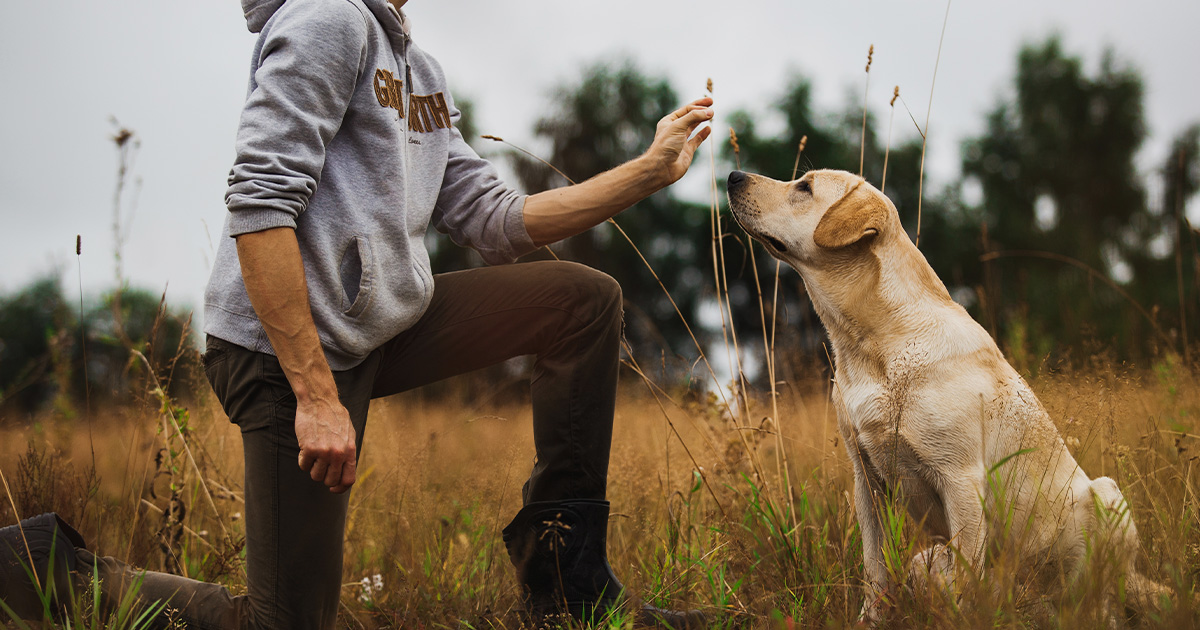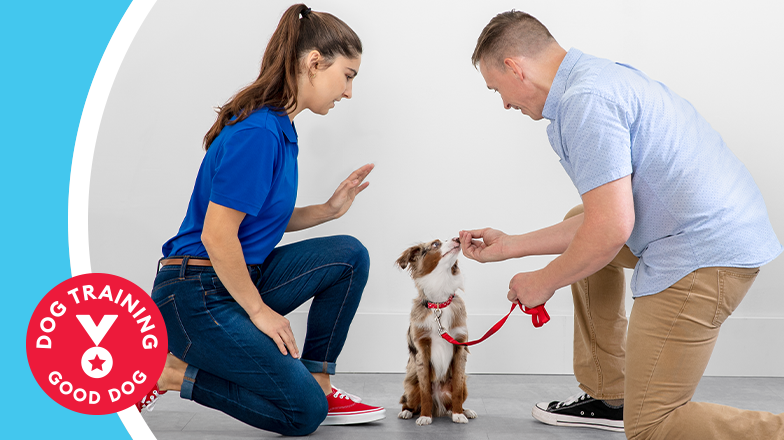Get Results with Puppy Training That Sets the Foundation for a Well-Behaved Dog
Get Results with Puppy Training That Sets the Foundation for a Well-Behaved Dog
Blog Article
Top Canine Training Strategies Every Proprietor Ought To Know
Comprehending efficient pet training strategies is vital for any type of family pet proprietor aiming to cultivate an unified relationship with their canine companion. Amongst the most popular techniques declare reinforcement, clicker training, and chain training, each offering special advantages that contribute to a well-behaved dog. Nevertheless, the success of these methods frequently pivots on the owner's commitment to consistency and persistence. As we discover these essential techniques, it comes to be apparent that grasping their subtleties can significantly affect the training experience and the pet's general actions. What are the necessary aspects that will guarantee these methods are implemented successfully?
Favorable Support Techniques
Using favorable reinforcement strategies is essential for efficient pet dog training, as it fosters a relying on bond in between the fitness instructor and the pet. This method focuses on gratifying preferable habits as opposed to penalizing unfavorable ones, producing an atmosphere helpful to finding out. Rewards can consist of deals with, appreciation, or play, which encourage pet dogs to duplicate the actions that earn them these rewards.
Positive support is rooted in the principles of operant conditioning, where behavior is influenced by its consequences. By regularly gratifying particular actions, fitness instructors can shape a pet dog's actions over time. A pet that sits on command and receives a reward is a lot more most likely to repeat that actions in the future.
Additionally, this method enhances the dog's enthusiasm for training sessions. When pets connect training with positive experiences, they are more engaged and responsive. Past immediate therapy, favorable support motivates a collaborative relationship in between the canine and trainer, decreasing anxiety and concern.
To take full advantage of efficiency, it is vital to deliver rewards quickly, making certain the pet dog links the habits with the support. Essentially, favorable reinforcement strategies not just generate better-trained pets yet also promote an unified collaboration between canine and proprietor.
Remote Control Training Method
The clicker training technique is a very effective technique that builds on the concepts of positive reinforcement by adding an unique sound to mark desired behaviors. This technique uses a tiny portable device that creates a clicking noise, allowing instructors to interact with their canines in a instant and clear way. When a pet dog executes an actions that the proprietor desires to encourage, the clicker is activated, adhered to by a benefit, typically in the form of deals with or appreciation.
The trick to successful clicker training exists in uniformity and timing. It is crucial to click at the specific minute the preferred actions happens, guaranteeing that the pet connects the audio with the activity and the succeeding reward. This approach not just boosts interaction however also cultivates a more powerful bond between the dog and the proprietor, as it urges interaction and interaction during training sessions.
Remote control training can be related to a range of commands and habits, from fundamental obedience to more complicated techniques. Its versatility and performance make it a preferred technique amongst specialist fitness instructors and pet owners alike, paving the means for a responsive and well-trained canine friend.

Chain Training Basics
Reliable chain training is vital for making certain a risk-free and satisfying strolling experience for both canines and their owners. Chain training should start early and be come close to with perseverance and consistency (Dog training). Beginning by choosing an ideal chain and why not try this out collar or harness. A flat collar might function for some dogs, while others may take advantage of a harness that decreases drawing.
Present your pet to the leash progressively, enabling them to explore it in a comfortable environment. Once they are accustomed, practice loose-leash strolling. This entails gratifying your pet for walking next to you as opposed to pulling ahead. Use treats and appreciation to enhance preferred actions, and make sure to remain calm and assertive.
If your dog begins to pull, stop strolling promptly. Wait until they go back to your side before resuming. This instructs them that pulling does not lead to advance. Additionally, practice various walking atmospheres to aid your dog adjust to disturbances.
Routine method will certainly strengthen your dog's understanding of leash rules. Keep in mind site here that leash training is an ongoing process; persistence and consistency will yield the most effective results, fostering a favorable experience for both you and your canine companion.
Socializing Strategies
Socializing is a vital facet of canine training that must ideally begin throughout puppyhood however can be useful at any age. Effective socializing aids pet dogs develop self-confidence and minimizes the likelihood of behavior issues. To apply successful socialization strategies, reveal your pet dog to a range of atmospheres, individuals, and various other pets.

Begin with controlled settings, such as puppy courses or organized playgroups, where young pet dogs can communicate safely. Gradually introduce your pet to new experiences, consisting of different noises, surfaces, and activities. Ensure these experiences are favorable and fulfilling to develop a sense of protection.
For adult pets or those lacking exposure, start with low-stress scenarios. Short, positive communications with pleasant people and tranquil pets can create favorable associations - Dog training. Make use of deals with and praise to enhance preferable actions throughout these experiences
Checking your dog's body language is necessary; indicators of concern or aggressiveness need to be dealt with right away, either by eliminating the dog from the situation or rerouting its focus. Constantly revealing your pet to varied stimulations will foster adaptability, making it an all-round buddy with the ability of prospering in numerous settings.
Consistency and Patience
Acknowledging the value of uniformity and persistence in pet dog training is necessary for accomplishing Check Out Your URL enduring outcomes. Educating a pet dog is a progressive process that requires a structured approach and unwavering commitment from the proprietor. Each command or actions must be enhanced consistently to help the pet dog understand what is anticipated of them. Inconsistent training can bring about confusion, making it hard for the dog to understand habits or commands, inevitably hindering progress.
Canines, like human beings, learn at their very own speed. This promotes a trusting partnership in between the pet dog and owner, urging an extra enthusiastic and eager student.
To grow consistency and perseverance, develop a routine training regular, use the exact same commands, and guarantee that all member of the family apply the very same training principles - Dog training. By doing so, you produce a steady setting for learning, permitting your canine to grow and establish into a well-behaved buddy

Conclusion
To conclude, effective dog training techniques, such as positive support, remote control training, and appropriate leash training, are essential for promoting a healthy and balanced owner-dog connection. Furthermore, applying socialization strategies and keeping consistency and patience throughout the training process contributes significantly to a dog's general wellness. By integrating these methods, pet dog owners can facilitate the growth of well-adjusted, loyal pets, inevitably enhancing the lifestyle for both the owner and the pet dog.
Amongst the most prominent methods are favorable support, clicker training, and leash training, each offering one-of-a-kind advantages that contribute to a well-behaved pet. As we discover these basic strategies, it comes to be obvious that mastering their subtleties can considerably impact the training experience and the canine's total habits.Utilizing positive support techniques is necessary for effective pet dog training, as it promotes a relying on bond between the pet and the fitness instructor.In conclusion, reliable canine training techniques, such as positive support, clicker training, and proper leash training, are important for fostering a healthy owner-dog connection. By integrating these approaches, canine proprietors can promote the advancement of well-adjusted, loyal family pets, ultimately enhancing the top quality of life for both the owner and the pet.
Report this page